Sigiriya: Sri Lanka’s ancient water gardens
Posted on December 6th, 2021
By Katie Lockhart Courtesy BBC
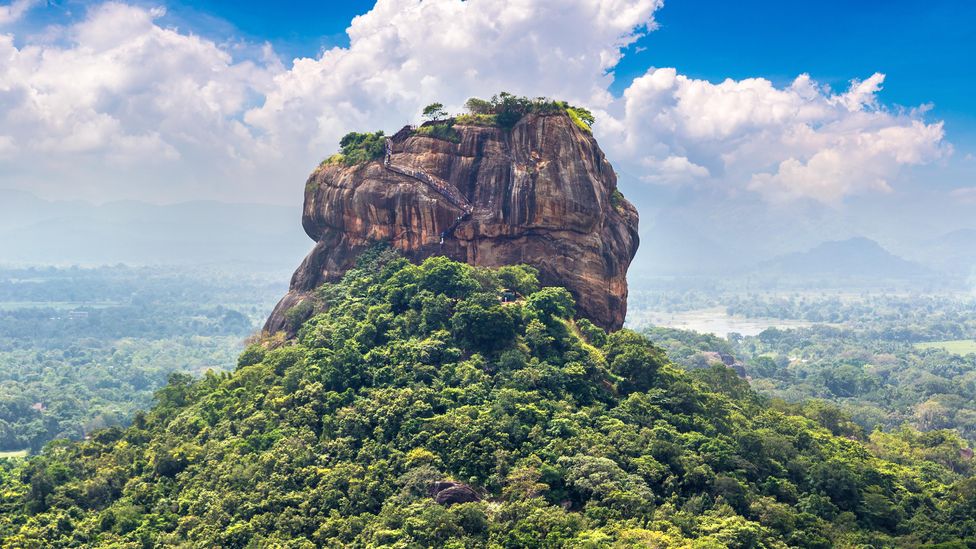
A complex masterpiece of irrigation engineering design, Sigiriya’s artfully designed water gardens required structural planning way ahead of its time.
Orange sand particles twinkled in the sun as a lone motorbike kicked up dust in its wake. It was 09:30 on a bright Monday morning and the temperature was already creeping past 30C. A family of toque macaque monkeys swung from verdant tree branches and rolled playfully in the hot sand in front of us. But we barely took notice; we couldn’t take our eyes off the 200m-high monolith in the distance.
Sigiriya, an ancient rock fortress and former royal palace, is one of Sri Lanka’s most visited and best-known sights, attracting just more than one million visitors in 2019. But on this sunny day in May 2021, my partner and I were the only two people there.
Dating back to 477 AD, Sigiriya is considered one of South Asia’s best-preserved examples of urban planning and one of its most important archaeological sites. The elaborate palace and its towering construction on top of the rock, as well as its risqué artwork, resulted in its 1982 listing as a Unesco World Heritage Site. However, its ingenious garden and water systems at the foot of the rock are what make it a national treasure.
The gardens at Sigiriya are not only the best-preserved water gardens in South Asia but some of the oldest landscaped gardens in the world. Important guests in the 5th Century would have walked a path with the impressively designed water gardens on either side, serving as a grand entrance to the more than 1,200 steps leading up to the palace.
In his essay Sigiriya: City, Palace and Royal Gardens, Senake Bandaranayake, founding director of archaeology at Sigiriya, explained that the site is a brilliant combination of deliberate symmetry and asymmetry playing on both natural and geometric forms. “The gardens at Sigiriya consist of three distinct but interlinked sections: the symmetrical or geometrically planned water gardens; the asymmetrical or organic cave and boulder garden; the stepped or terraced garden circling the rock, the (miniature) water garden and the palace gardens on the summit of the rock,” he wrote.
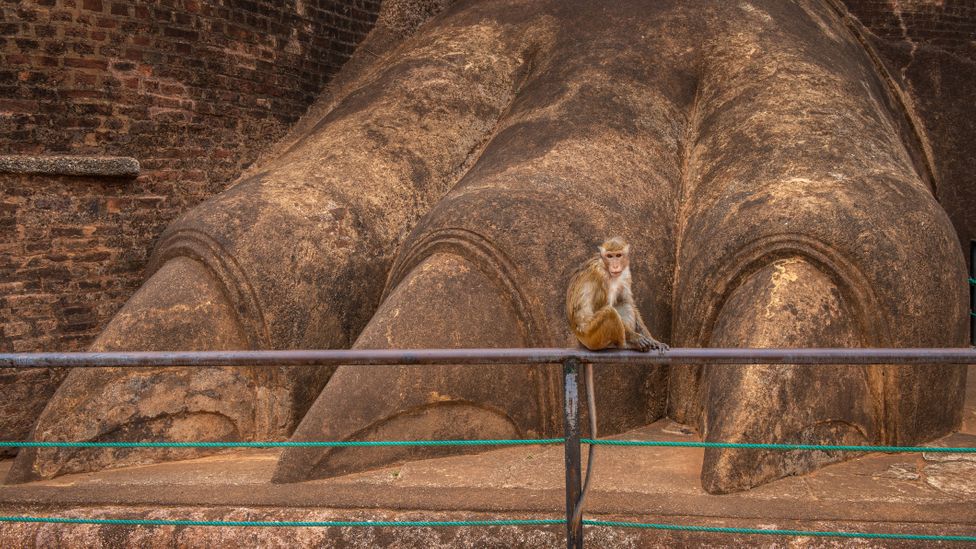
The 5th-Century palace was built to resemble a lion, with the paws flanking the main entrance (Credit: Boy_Anupong/Getty Images)
Within the gardens were artfully designed pools, fountains, streams and platforms that once held pavilions and performers. “For comparison, it would have looked similar to a modern luxury resort with beautiful gardens and swimming pools,” said Sumedha Chandradasa, a tour guide lecturer in Sri Lanka for more than 24 years.
Surprisingly, the detailed design of these gardens is not what’s most impressive; rather it’s how they work. These water systems are considered an engineering marvel due to the use of hydraulic power, underground tunnel systems and gravitational force that creates a visually spectacular system of pools and fountains still functioning almost 1,500 years later.
You may also be interested in:
• Asia’s empire crushed by water
• China’s ancient ‘stairways to heaven’
• An immense mystery 11,000 years old
Some Sri Lankans still believe in ancient folklore that says all the water that fills the garden’s streams flows down from the pond at the top of the rock. In reality, the palatial complex’s water is sourced from a nearby reservoir, known locally as “tanks”. A series of underground conduit terracotta pipes use gravitational force and hydraulic pressure to send water from the Sigiriya tank (with a slightly higher elevation than the gardens) into the different pools, fountains and streams throughout the impeccably organised gardens.
However, some of the garden water does come from the top of Sigiriya. The pools at the top of the rock are filled with rainwater, and a series of drains cut into the rock connect to a large cistern, which feeds into the underground conduit system to help supply the gardens with water. “The total conception involves the knitting together of a number of hydraulic structures of varied scale and character in a single intricate network – a complex masterpiece of irrigation engineering design,” wrote Bandaranayake.
Bandaranayake also notes in his essay that during excavation, water conduits were found at different depths, likely to achieve varying water levels; something that required a masterful knowledge of physics and engineering.
Although the complex’s origins date to the 5th Century, the story of how it came to be seems more like a modern-day soap opera. Before Sigiriya, Sri Lanka’s royal capital was located in Anuradhapura, more than 70km to the north-west. A coup, led by King Dhatesena’s son from a non-royal consort, led to his bloody death and the scheming son, King Kasyapa, taking the throne.
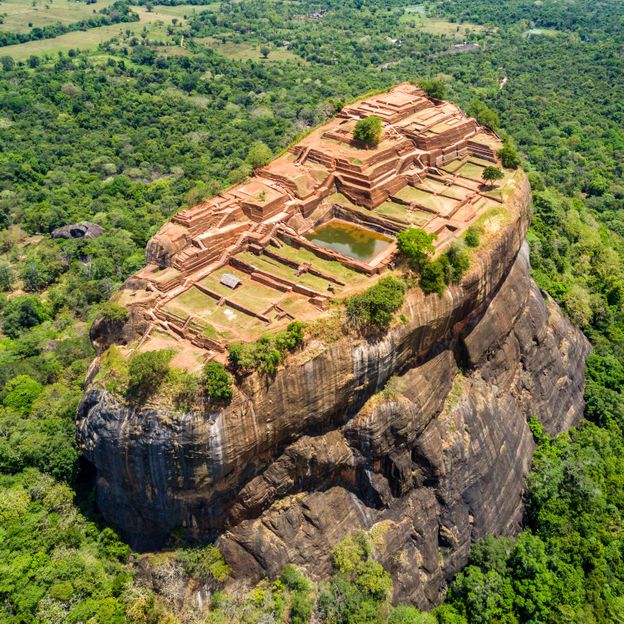
Sigiriya is considered one of South Asia’s best-preserved examples of urban planning (Credit: Dmitry Malov/Getty Images)
Kasyapa moved the royal capital to Sigiriya, or “Simha-giri” which means “Lion Mountain”, and built a new palace on top of the rock. When approaching the stairs that lead to the top of the rock and the palace complex above, you see why. “The theory is, according to The Ancient Chronicles [Sri Lanka’s historical chronicles], that he built the palace to look like a squatting lion,” explained Jagath Weerasinghe, emeritus professor at the Postgraduate Institute of Archaeology and Sigiriya’s director of archaeology. “The lion paws are the main entrance that will take you to the top of the mountain.”
King Kasyapa ruled from there until 495 AD, when he abandoned it and the site became a Buddhist monastery.
A welcome effect of visiting during the pandemic meant my partner and I had the entire complex to ourselves for several hours. While the once-plastered-and polished finishings of the water gardens have disappeared with time, we could still see the brick foundation outlines of the pools, fountains and streams that fill with water during the rainy season.
One area, known as the “miniature water gardens” (not-so miniature; measuring 30m wide and 90m long), was split into five sections with several unique features including a snake-shaped stream that required structural planning way ahead of its time. “A striking feature is the use of these water-surrounds with pebbled or marbled floors, covered by shallow, slowly moving water. These, no doubt, served as a cooling device and at the same time had great aesthetic appeal, creating interesting visual and sound effects,” wrote Bandaranayake.
According to Weerasinghe, these miniature water gardens would have been best experienced at night, under the moonlight’s reflection on the shallow pools. “There are very romantic aspects to the royal precinct of Sigiriya,” he told me. While the miniature water gardens are no longer as spectacular as they would have been in the late 400s, the low water levels and platforms in the pond have led archaeologists to believe that they were used for musical performances – an incredibly thoughtful design feature for that period.
We kept walking along the grounds in front of the rock, through the miniature water gardens to its snake-shaped stream, which holds Sigiriya’s signature water fountains. They are made of limestone plates with symmetrical holes, and even after 1,500 years, still work during the yearly monsoon rains. “Below the fountain is a small chamber where the water pressurises, forcing the water to bubble up into the fountain about four or five inches when the water level is high,” Chandradasa explained.
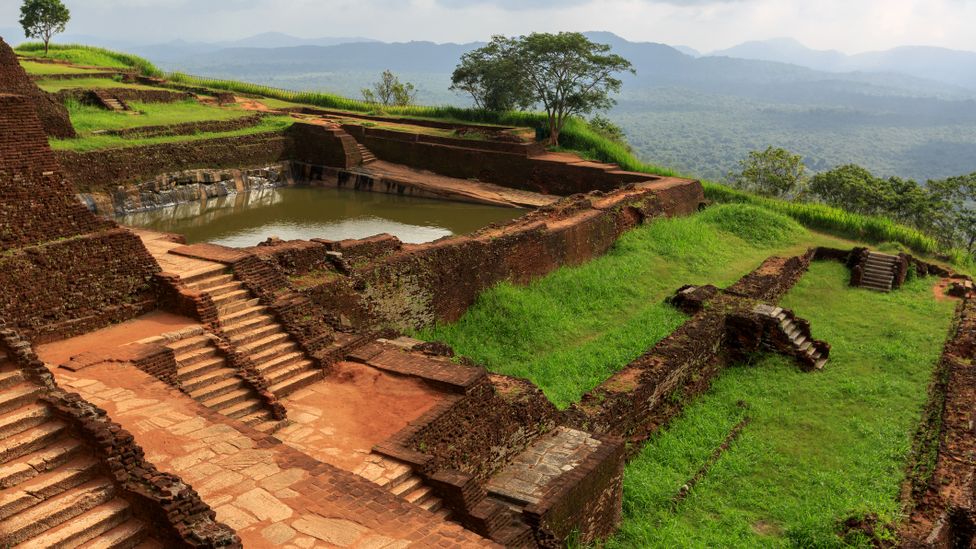
Stone steps leading into the pools indicate that they would have been used for swimming (Credit: Pavel_klimenko/Getty Images)
Theorised to have been used by the royal family and Kasyapa’s consort of women, these fountains and pools, especially the large pond on top of Sigiriya, were designed as swimming pools to give relief from the hot South Asian sun, complete with stone steps leading down into the water.
But beyond their beauty and practicality, the water gardens had another purpose. “Kasyapa wanted to present water in a particular way,” said Weerasinghe. As well as being used for pleasure, they also sent a strong message of his power and ingenuity to anyone who doubted King Kasyapa, especially Mahavihara monks, who made up the most powerful monastery in Anuradhapura and were in favour of his father.
As well as being used for pleasure, they also sent a strong message of his power and ingenuity to anyone who doubted King Kasyapa
“When you look at this elaborate and very intriguing way of using water at the royal precinct of Sigiriya, he’s telling something to these people about his power,” Weerasinghe added.
Past the massive stone lion paws, at the end of more than 1,200 precarious steps up Sigiriya, our clothes were soaked with sweat and I struggled to catch my breath. We walked the ruins of the central palace and stumbled upon the summit’s large pool. A dip in it like the ancient royals once did would have been tempting, but no rain in weeks and no royal servants to maintain it meant murky bacteria lurked on the surface.
From high above, the water garden system below was clear, perfectly centred and impressively aligned. The views of the lush green jungle melding with the blue horizon seemed endless. It was an ideal place for a palace with gardens worthy of the powerful king who built it.
“Just imagine during the rainy season, there are clouds sitting on this hill,” said Weerasinghe. “Then, you are walking through this garden and you see this big pond with these water waves coming down and the fountains gushing water. Just imagine what kind of an experience that would be.”
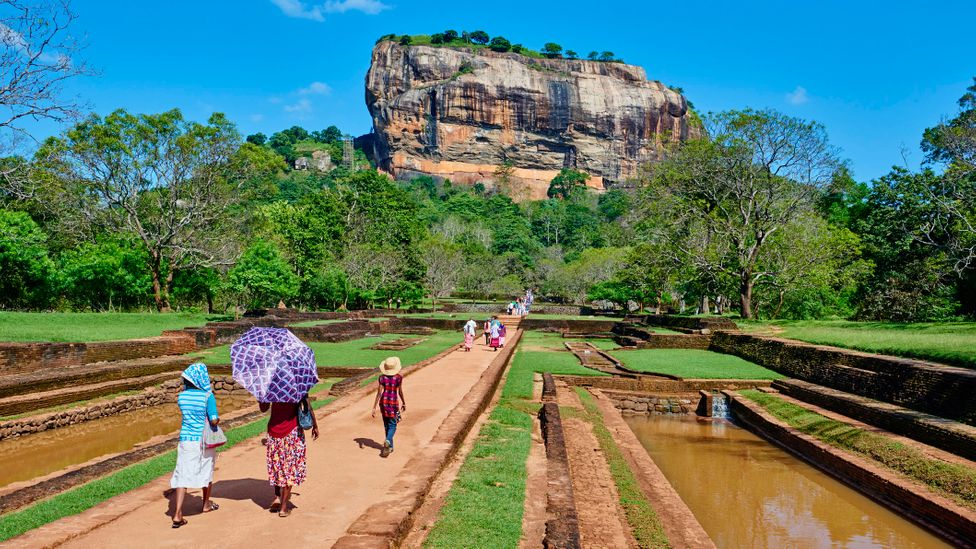
Designed to impress, the long path to the palace was flanked with pools and fountains (Credit: Tuul & Bruno Morandi/Getty Images)
Ancient Engineering Marvels is a BBC Travel series that takes inspiration from unique architectural ideas or ingenious constructions built by past civilisations and cultures across the planet.
—
Join more than three million BBC Travel fans by liking us on Facebook, or follow us on Twitter and Instagram.
If you liked this story, sign up for the weekly bbc.com features newsletter called “The Essential List”. A handpicked selection of stories from BBC Future, Culture, Worklife and Travel, delivered to your inbox every Friday.
December 6th, 2021 at 6:30 pm
Present day generations trying to figure out a geological phenomena arising from a volcanic plug, perhaps sitting on top of a aquifer deep underneath.
However not a single word about the mirror wall that was the medium our young generations of yesteryear used to write their comments (known as ‘kurutu gee’ or scribbled poems) just like their today’s counterpart doing on a present day digital wall called ‘Facebook’!.
This has been pointed out to her teacher by a little girl at Embilipitiya recently according to Prof. Raj Somadeva in his lecture of 6/12/2021.
December 6th, 2021 at 6:41 pm
BTW, Embilipitiya was a sleepy village in deep south of the country just a few decades ago. So, can we say our politicos did absolutely nothing since 1948?.